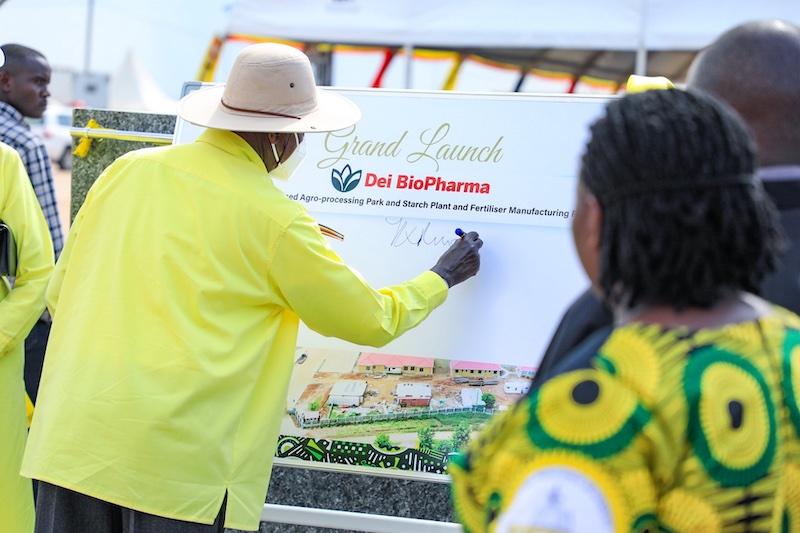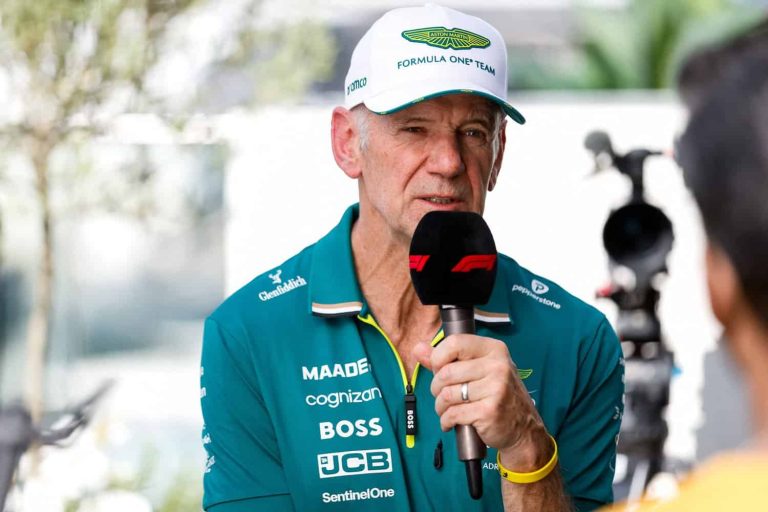
NAMASAGALI, KAMULI — On a warm November morning in Namasagali, Uganda tried to reimagine its future.
President Yoweri Museveni arrived to open a US$50 million starch processing plant, a factory built not just to turn cassava into flour, but to propel the country into the global pharmaceutical supply chain.
Behind the polished machinery lies an audacious promise: thousands of jobs, a guaranteed market for farmers, a vaccine hub for Africa, and even a path to producing cures the continent has never had access to.
For its architect, Dr Matthias Magoola, this is more than a factory; it is the first brick in a scientific city he believes could rewrite Uganda’s industrial destiny. On November 20, 2025, President Museveni, accompanied by First Lady and minister of Education and Sports Janet Kataaha Museveni, cut the ribbon on the sprawling facility, the first phase of a much larger industrial and pharma- ceutical complex being built by Ugandan scientist and entrepreneur Dr Matthias Magoola under Dei BioPharma Ltd.
Set on more than 5,000 acres, the plant is designed to turn Uganda’s humble cassava into high-value industrial products — pharmaceutical-grade starch, food-grade starch, glucose, maltose and fructose — inputs the country has imported for decades at enormous cost.
“We are producing five products — pharmaceutical grade starch, food grade starch, glucose, maltose, and fructose — and this is the largest on the African continent,” Dr Magoola said with quiet pride as he led officials through the facility.
The launch signals the start of what Dei Biopharma describes as Africa’s largest integrated industrial park dedicated to pharmaceutical and food-grade processing. The project has already mobilised more than US$150 million, with the long-term ambition of transforming Namasagali into a $10 billion science-and-innovation-powered city.
For farmers across Busoga, Teso, Lango and Bukedi, the stakes are personal. The plant will consume thousands of tonnes of cassava daily, creating a guaranteed market in a region where farmers have struggled with shrinking returns from sugarcane and unpredictable pricing.
President Museveni, who has championed industrial value addition for years, praised Dr Magoola for what he called “resilience and innovation,” and took aim at those who previously tried to derail his work.
“I want to congratulate Magoola as a very innovative young person,” Museveni said. “Africans don’t like innovation. They are used to sleeping. They don’t want new things. Africans need to critique themselves and support new individuals with innovative ideas. Even when I started fighting, some people thought I was mad.”
He went further, arguing that Uganda’s indigenous knowledge — often dismissed — is now proving its value to global partners.
“These Americans have come here to support this work. Now all these other foreigners should know there is ancient knowledge here, and this knowledge can help the whole world,” he said.
“Regarding cassava, all these are gold mines because they are needed in the world. This is all wealth. But Africans are sleeping.” Still, Museveni warned small land-holders not to rush blindly into cassava farming for industrial use, noting that profitability remains tied to land size and yields.
“We must be clear about the earnings per acre per year. If it’s not much, we shouldn’t repeat the mistake of sugar-cane,” he said.
“People with small land copied those with huge chunks of land.” For Dr Magoola, the starch plant is only the beginning. Speaking in the shadow of newly constructed warehouses and fermentation tanks, he outlined a series of projects underway at the industrial park — each one ambitious, each grounded in the belief that Uganda can manufacture what it once imported.
“We own a patent on a foot-and-mouth disease vaccine for the first time in the world,” he announced.
“We’re going to be able to supply foot-and-mouth disease vaccines on the African continent for the first time.”

He also revealed plans for a 1,000-bed hospital dedicated to sickle cell, cancer, and other genetic diseases. The facility will be equipped to administer a sickle-cell cure approved by the U.S. Food and Drug Administration — a therapy unavailable in Africa due to its staggering cost.
Dei is also developing Glucagon-Like Peptide-1 (GLP-1) drugs — among the world’s most profitable medications because of their use in diabetes and weight management. The U.S. Food and Drug Administration has approved their development plan, which Dr Magoola says could inject $15 billion into Uganda’s economy once in production.
“This is his vision,” Dr Magoola said of President Museveni. “He has guided me as a young boy when I went to him with an innovation to treat malaria, and he believed in me. When taken to the United States, the malaria drug was found to kill more parasites than known drugs on the market.”
He confirmed that government has committed over US$200 million toward Dei BioPharma’s flagship pharmaceutical facility in Matugga. Inside the political tent erected beside the plant, applause erupted as First Deputy Prime Minister and Minister for East African Community Affairs, Rebecca Kadaga, hailed the moment as proof of the ruling party’s campaign message.
“This place emphasises the NRM’s campaign theme of protecting the gains,” Kadaga said. “This is one of the gains we are protecting because this was not here previously.”
She urged government to fast-track a power line from Isimba to support the region’s expanding industrial base. As the ceremony wound down and villagers pressed closer to catch a glimpse of the president, the excitement in Namasagali was hard to miss.
For many here, the plant represents more than industrial ambition. It is a rare chance to climb the value chain — to turn what grows in their gardens into products destined for factories, pharmacies, and markets far beyond Uganda’s borders.
Whether the project transforms Namasagali into the scientific city Dr Magoola imagines will depend on investment, oversight, and time. But for now, the hum of machines in the new starch factory signals something powerful: a belief that Uganda can build — not just import — the future it wants.


